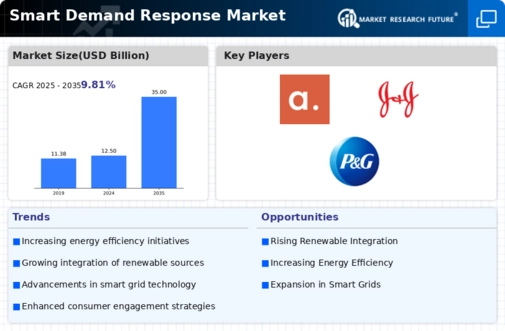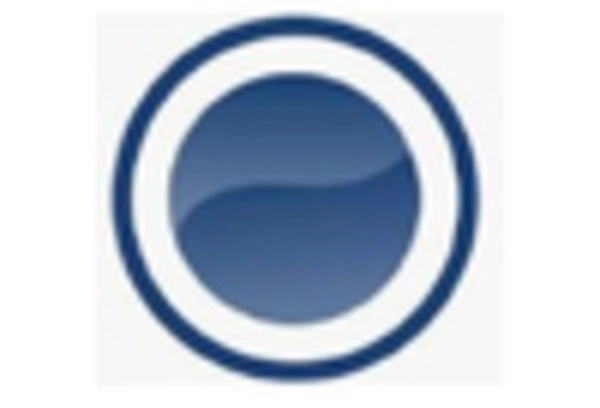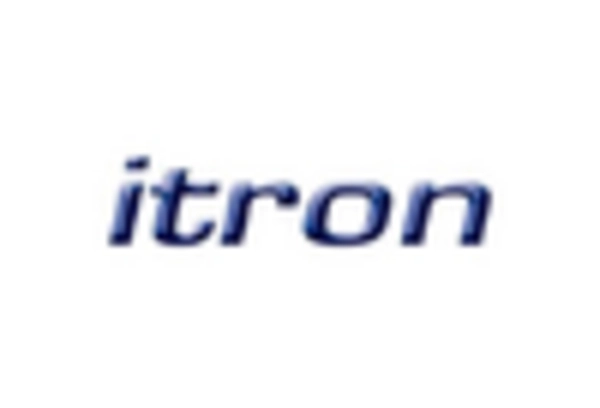Rising Energy Costs
Escalating energy costs are a significant driver influencing the Smart Demand Response Market. As energy prices continue to rise, consumers and businesses are increasingly motivated to adopt demand response strategies to manage their energy expenditures. Reports indicate that energy prices have surged by approximately 20 percent in various regions over the past few years. This financial pressure encourages the implementation of smart demand response solutions, which allow users to shift their energy usage to off-peak times, thereby reducing costs. Consequently, the Smart Demand Response Market is likely to expand as more stakeholders recognize the economic benefits of demand response initiatives.
Government Incentives and Policies
Government incentives and supportive policies are instrumental in propelling the Smart Demand Response Market forward. Many governments are implementing programs aimed at promoting energy efficiency and demand response initiatives. For instance, various countries have introduced financial incentives for consumers and businesses that participate in demand response programs. These policies not only encourage participation but also foster innovation within the industry. As regulatory frameworks continue to evolve, the Smart Demand Response Market is expected to benefit from increased investment and participation, ultimately leading to a more resilient energy system.
Growing Awareness of Energy Efficiency
The rising awareness of energy efficiency among consumers and businesses is a key driver for the Smart Demand Response Market. As environmental concerns gain prominence, stakeholders are increasingly seeking ways to reduce their carbon footprint and enhance energy efficiency. Educational campaigns and initiatives aimed at promoting energy conservation have led to a shift in consumer behavior, with many individuals actively seeking demand response solutions. This growing consciousness is likely to stimulate demand for smart technologies that facilitate energy management. Consequently, the Smart Demand Response Market is expected to flourish as more entities recognize the importance of energy efficiency in their operations.
Integration of Renewable Energy Sources
The increasing integration of renewable energy sources into the energy mix is a pivotal driver for the Smart Demand Response Market. As countries strive to meet sustainability goals, the reliance on intermittent renewable sources such as solar and wind energy has surged. This transition necessitates advanced demand response solutions to balance supply and demand effectively. According to recent data, the share of renewables in the energy mix is projected to reach 50 percent by 2030 in several regions. Consequently, the Smart Demand Response Market is likely to experience heightened demand as utilities and consumers seek to optimize energy consumption and reduce reliance on fossil fuels.
Advancements in Smart Metering Technology
The evolution of smart metering technology plays a crucial role in shaping the Smart Demand Response Market. Smart meters facilitate real-time monitoring and management of energy consumption, enabling consumers to make informed decisions about their energy use. The proliferation of smart meters is expected to reach over 1 billion installations by 2025, significantly enhancing the capabilities of demand response programs. This technological advancement not only empowers consumers but also provides utilities with valuable data to optimize grid operations. As a result, the Smart Demand Response Market is poised for growth, driven by the increasing adoption of smart metering solutions.
















Leave a Comment